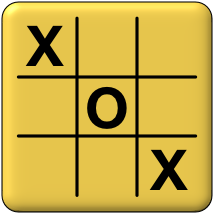What’s New 📩
| Title | |
| Phonetic Distance Between Words with Application to the International Spelling Alphabet 🔠 | |
| Summary | |
This post develops a robust quantitative method for measuring the distance (or difference) between:
|
|
| It describes how discrete convolution can be used to determine the distance between words which naturally accommodates variations in phoneme duration. Existing International Spelling Alphabet and US Phonetic Alphabet schemes are compared using several quality measures. Alternative word sets are generated that out perform the existing schemes using these quality measures. | |
Post Summary
Games 🏆
Bridge ♠️♥️♦️♣️
| Title | |
| Bridge Hand Probability Analysis | |
| Summary | |
| Considers the probability of holding various types of hand after the initial deal and before any other information is available. Several standard tables are generated that represent some key aspects of the game. A general algorithm is developed that allows a broad range of hand probabilities to be calculated including suit distribution, High Card Points (HCP) and honour holdings. | |
| Downloads (see full post for context) | |
| ◻︎ Suit Distribution Probabilities (csv) | |
| ◻︎ High Card Point (HCP) Probabilities (csv) | |
| ◻︎ Suit Distribution by HCP (csv) | |
| ◻︎ HCP by Number of Aces (csv) | |
| ◻︎ HCP by Keycards (csv) | |
| Title | |
| Bridge Partnership (Two Hand) Probability Analysis | |
| Summary | |
| Extends the previous post on Bridge probability analysis from one hand to two hands that form a partnership. Various probability tables are generated for suit distributions and HCP holdings for two hands. | |
| Downloads (see full post for context) | |
| ◻︎ Suit Distribution Probabilities for Two Combined Hands (csv) | |
| ◻︎ High Card Point (HCP) Probabilities for Two Combined Hands (csv) | |
| ◻︎ High Card Point (HCP) Probabilities for Two Separate Hands (csv) | |
Tic-Tac-Toe 
| Title | |
| Tic-Tac-Toe Analysis using Clojure (Part 1) | |
| Summary | |
| Analysis of the Tic-Tac-Toe (aka Noughts and Crosses) game tree using Clojure. Shows how it can be significantly reduced in size by accounting for winning positions, duplications, symmetries and forced moves. The analysis “discovers” the notion of forked positions and that there are only three drawn positions. There are also game tree visualisations. | |
| Downloads (see full post for context) | |
| ◻︎ Full Tic-Tac-Toe tree diagram (pdf) | |
| ◻︎ Corner first move branch (pdf) | |
| ◻︎ Edge first move branch (pdf) | |
| ◻︎ Centre first move branch (pdf) | |
| Title | |
| Tic-Tac-Toe Analysis using Clojure (Part 2) | |
| Summary | |
| Analysis of Tic-Tac-Toe (aka Noughts and Crosses) player strategy using Clojure. Building on Part 1, it develops opening theory, position evaluation and a “reduced” game tree that captures the essence of the game. | |
| Downloads (see full post for context) | |
| ◻︎ Scored Reduced Game Tree – excludes duplicate nodes but has more cross links (pdf) | |
| ◻︎ Scored Reduced Game Tree – removes all cross links but has some nodes duplicated (pdf) | |
| ◻︎ Scored Reduced Game Tree – excluding symmetries and duplicates (pdf) | |
Miscellaneous 🗄
| Title | |
| Efficient Recursive Levenshtein (Edit) Distance Algorithm | |
| Summary | |
| A recursive algorithm for calculating the Levenshtein distance using an upper bound to significantly improve performance. Includes an implementation in Clojure with comparative benchmarks. An iterative “matrix” implementation is also included. | |
| Title | |
| High Quality HTML Tables using Text Only Layouts | |
| Summary | |
| A proposed specification, and basic Clojure implementation, is provided to create HTML tables from text only input. CSS inline styling of table HTML elements, including individual rows, columns and cells, is supported, as well as rowspan and colspan. The resulting HTML is suitable for inclusion in Markdown documents, for example. The specification allows the generation of high quality tables for blogs and similar Web-based documentation. | |
| Code | |
| ◻︎ Basic Clojure Implementation | |
| Title | |
Alternative Star Trek Warp Speed Scale and Related Equations  |
|
| Summary | |
This post:
|
|
| Title | |
| Phonetic Distance Between Words with Application to the International Spelling Alphabet 🔠 | |
| Summary | |
This post develops a robust quantitative method for measuring the distance (or difference) between:
|
|
| It describes how discrete convolution can be used to determine the distance between words which naturally accommodates variations in phoneme duration. Existing International Spelling Alphabet and US Phonetic Alphabet schemes are compared using several quality measures. Alternative word sets are generated that out perform the existing schemes using these quality measures. | |